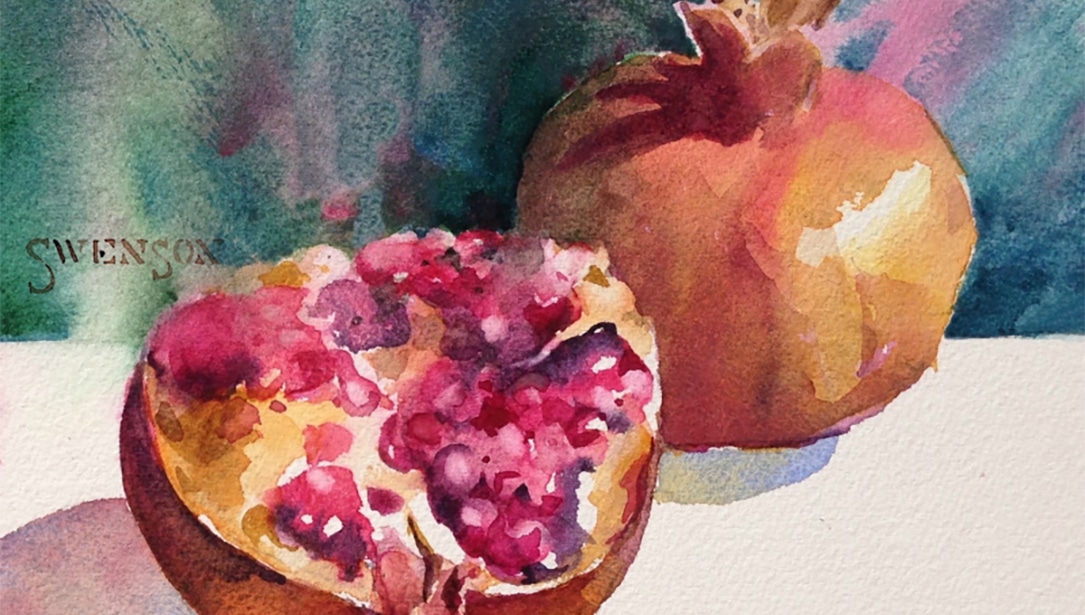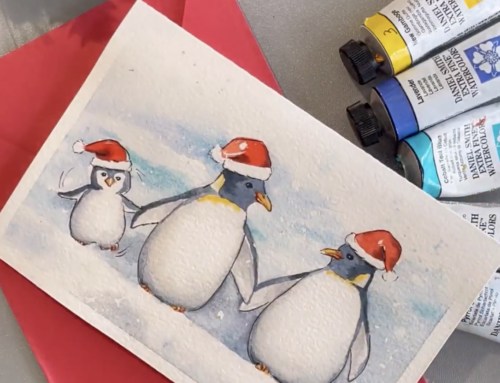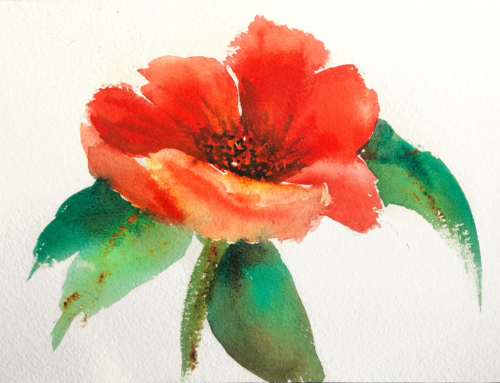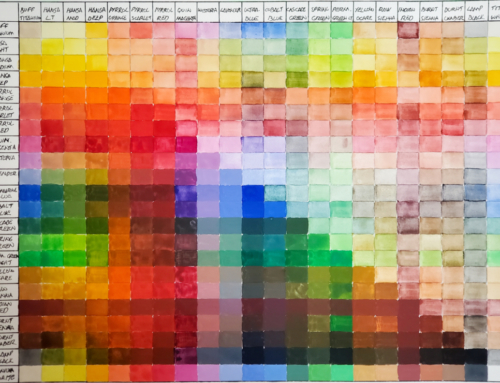Share:
If texture is what you’re after (which I am), try the PrimaTek Watercolors – they mix beautifully with other paints on your palette and bring excitement to the surface of a painting. They are heavier in body and settle into the valleys of your paper, leaving behind wonderful granulation and texture. The pigments were carefully selected to give you a wide range of colors and textures you’ll find nowhere else. When mixed with other colors the possibilities are endless.
My pomegranate palette:


Step 1
I start by drawing my pomegranates with a 2B pencil on 140lb cold press paper. I draw very simply for placement and proportions.
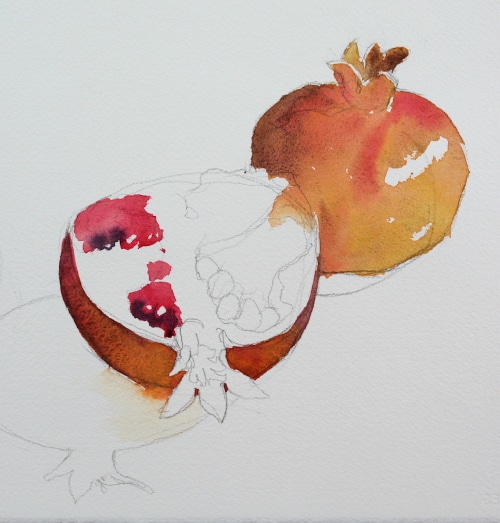
Step 2
Paint the big shape first. On my palette, I make three puddles of paint – New Gamboge, Piemontite Genuine and Rhodonite Genuine. I paint both pomegranates at once with New Gamboge. While the paint is still very wet, I add Piemontite Genuine to the shadowed (left) side of the right pomegranate and to the underside of the other. Before the passage has lost its shine, I add Rhodonite Genuine to the top of the right pomegranate. Timing is important when working back into a wet area. Once the shine is gone…don’t touch, let dry! Now to paint the seeds…

Step 3
The seeds are painted wet into wet, using Rhodonite Genuine as the base color and touches of Amethyst Genuine for the darker seeds. The membrane section is a light value of New Gamboge and Piemontite Genuine.
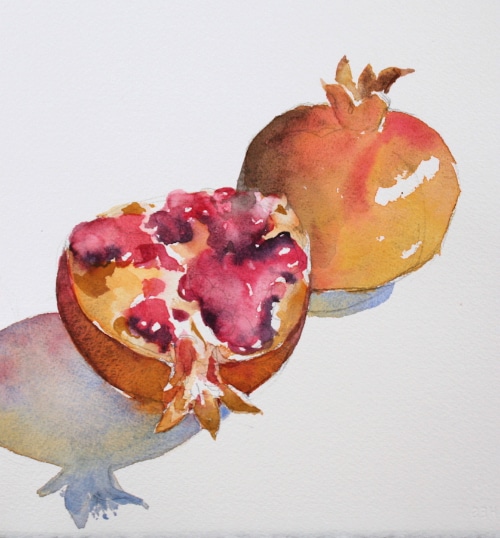
Step 4
Cast shadows are often overlooked in paintings and lack excitement. When I paint cast shadows, I like to see reflected light and colors in the shadows. I start by painting the overall shadow shape with a mid-value of French Ultramarine. Before this paint loses it shine, I add a small amount of New Gamboge and Rhodonite Genuine to add life and interest.

Step 5
Next I focus on the form shadows. The form shadows are on the left side and underneath. On my palette, I make two puddles of paint – Piemontite Genuine and Rhodonite Genuine. The form shadow is a darker value of the original color. Careful attention needs to be given to the edges. I lay down the paint, but before it has a chance to dry or lose its shine, I use a damp brush to soften and fade out the paint. I then add the cast shadow on the top.
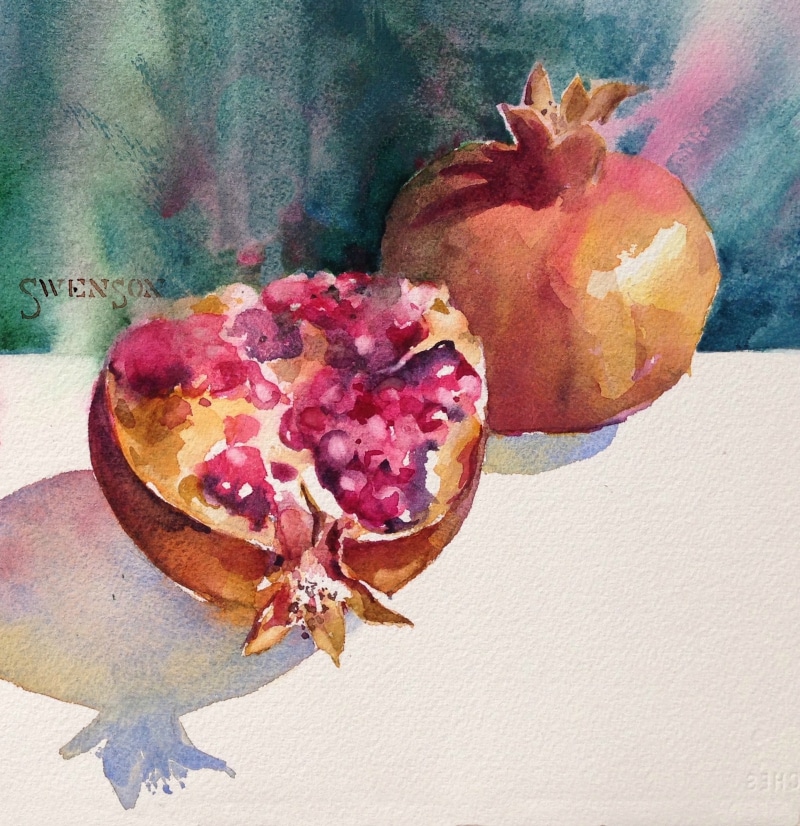
Step 6
In the final stage, I have fun playing with the background. The sedimentary nature of the PrimaTek paints makes exciting things happen! On my palette, I make two big puddles – Mayan Blue Genuine and Jadeite Genuine. I start by painting with Mayan Blue Genuine and immediately add Jadeite Genuine. Before the paint has a chance to set up, I drop in a little Rhodonite Genuine. The addition of this color relates to the pomegranates and adds a touch of warmth to a cool area. Now I use a spray bottle to push the paint around. Why do I do this? It’s fun to move and mix pigment without overworking the surface with a paint brush. I tilt the paper so I can control the spray and flow of water. I keep a towel near to wipe up the excess water.
Happy Painting!

